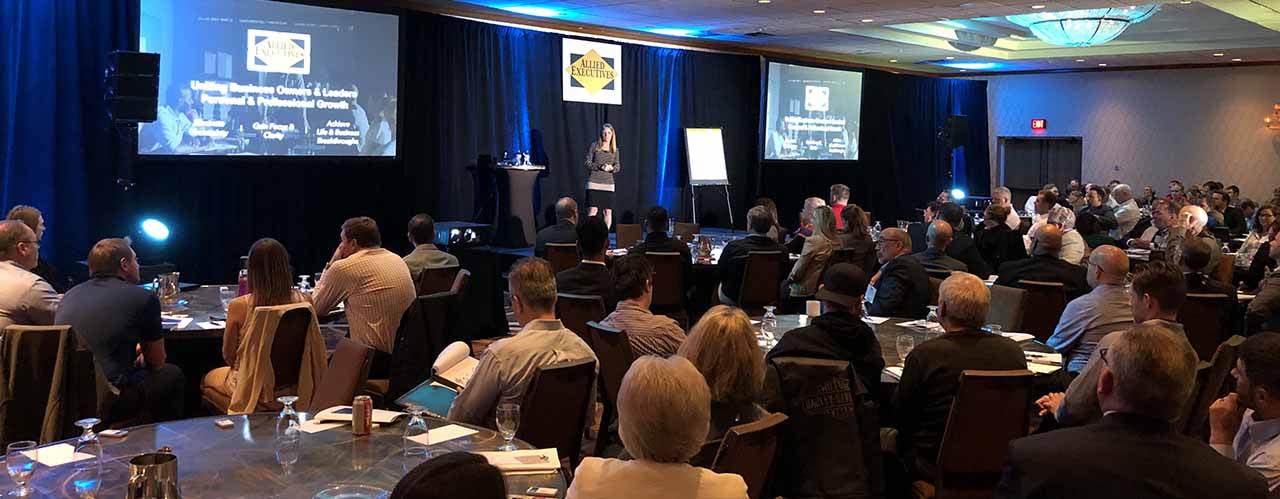KT’s Takeaways - Better Pricing -> Higher Profits
14 Lessons Learned from Casey Brown of Boost Pricing
Recently, Allied Executives and many of our members spent the afternoon with Casey Brown of Boost Pricing.
Allied Executives' educational workshops (a benefit for our members and their teams) focus on bringing in experts and practitioners who have pragmatic and deep expertise, like Casey, to learn more and explore solutions to critical areas within our businesses.
Pricing strategy is a topic that comes up often. For those who were at the event, the takeaways were powerful and immediately implementable. For those who weren’t there, below are 14 insightful takeaways from the day.
- Pricing is the biggest financial lever you own. You can change it today and impact EBITDA tomorrow. Nothing else has this sort of immediate impact.
- Why is that? Because of what’s called the "pulley effect". With a 5% net profit, a 1% increase (while holding expenses) in price results in 20% improvement in net profit.
- Revenue = Vanity. Profit = Sanity.
- Pull up a chair and have a pricing meeting. Make pricing a strategic priority in your business. Organizations meet and talk about sales and operations relentlessly. Often one or more meetings per week. Yet, minimal change or impact occurs in short order. However, few organizations meet on pricing strategy with any regularity.
- Get granular with your pricing. A price increase doesn’t need to - and shouldn't - happen in big chunks. An across-the-board price increase can risk volume. Rather, surgically move price. Seek the places where your clients place less value, as well, where you add the MOST value/possess strongest differentiation. Those are your price change opportunities.
- We are all price sensitive - but not on everything. Consumers and buyers are sensitive to price on items we buy frequently or are a large part of our budget (i.e., a gallon of gas, or, in a B2B setting insurance or wages), but not so much on non-frequent purchases or small % of budget items.
- Therefore, don't extrapolate customer price sensitivity onto your less price sensitive products and services. Don't ignore opportunities to take a price increase on fringe products and services (i.e., a delivery charge).
- Don't let your most price sensitive customers dictate your pricing strategy. Our price sensitivity is created by our customers price sensitivity.
- On value-based pricing – Crack the code on how you help your customers win. Solve the problem they don’t know they have. Become the provider of choice and you can price accordingly and get paid what you are worth.
- Price-to-Quality Effect – Your price sends a signal. What signal do you want to send? There is such a thing as "reassuringly expensive". Don't be suspicious and cheap. In every industry there is a provider that is suspicious and cheap. Your customer knows this also.
- Handling pricing objections – We fail at this to a lack of messaging and confidence. Simple as that. Know the reasons you are the best choice, teach your people to communicate them, and practice it religiously. Don't go into battle naked.
- If your value proposition isn't strong, or you don't deliver on your promise, then your price will be too high. Guarantee your delivery, then deliver, and price sensitivity will go away.
- Buyers trade in our fear and lack of confidence in our products and services. We sell and discount out of fear of them going somewhere else for what we provide.
- NEVER reduce your price without reducing the offering. Unearned discounts break trust. Something must change with the deal. Otherwise, you were overcharging from the start.
If pricing strategy is an issue for your firm, I recommend following Casey online to learn more about how she and her team can help you discover your true pricing power.


